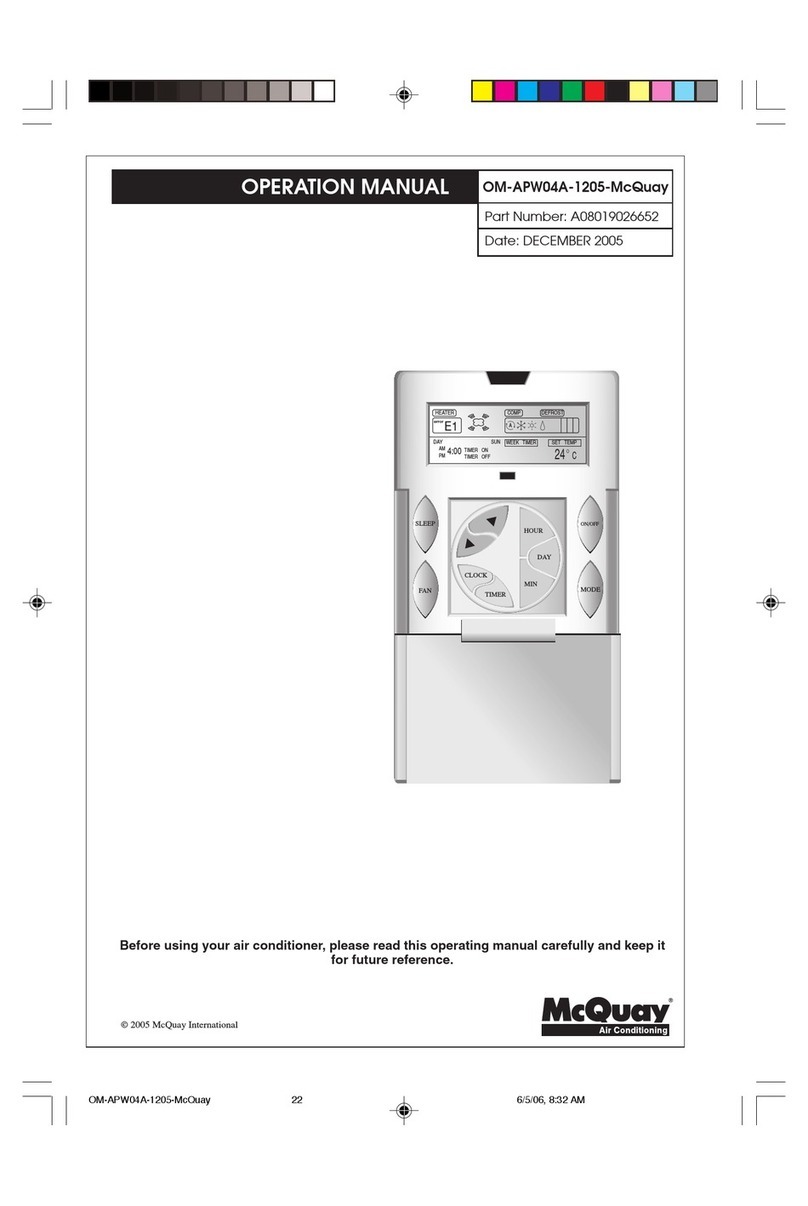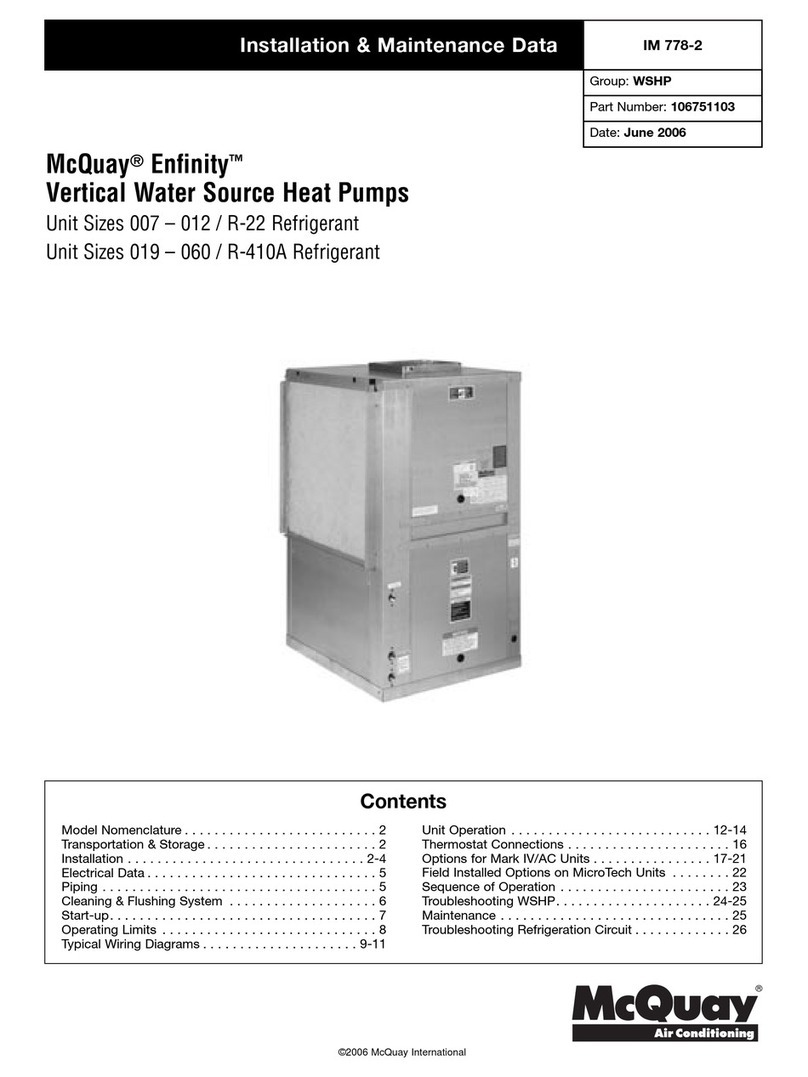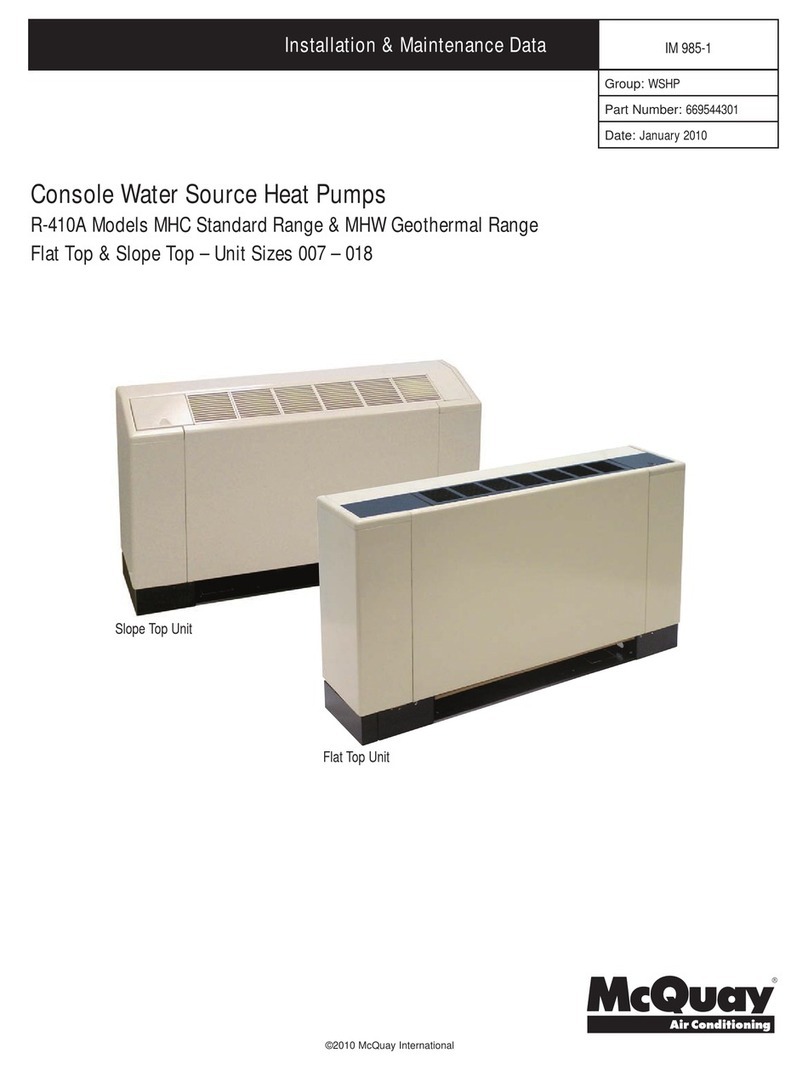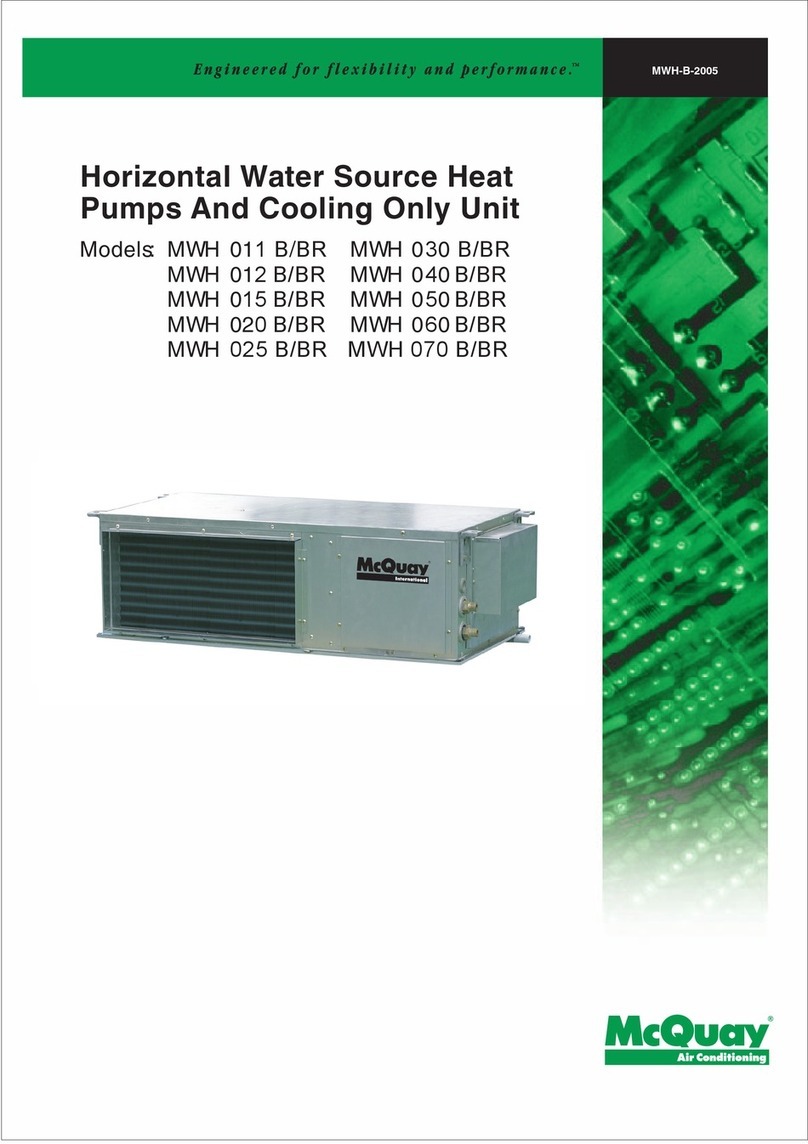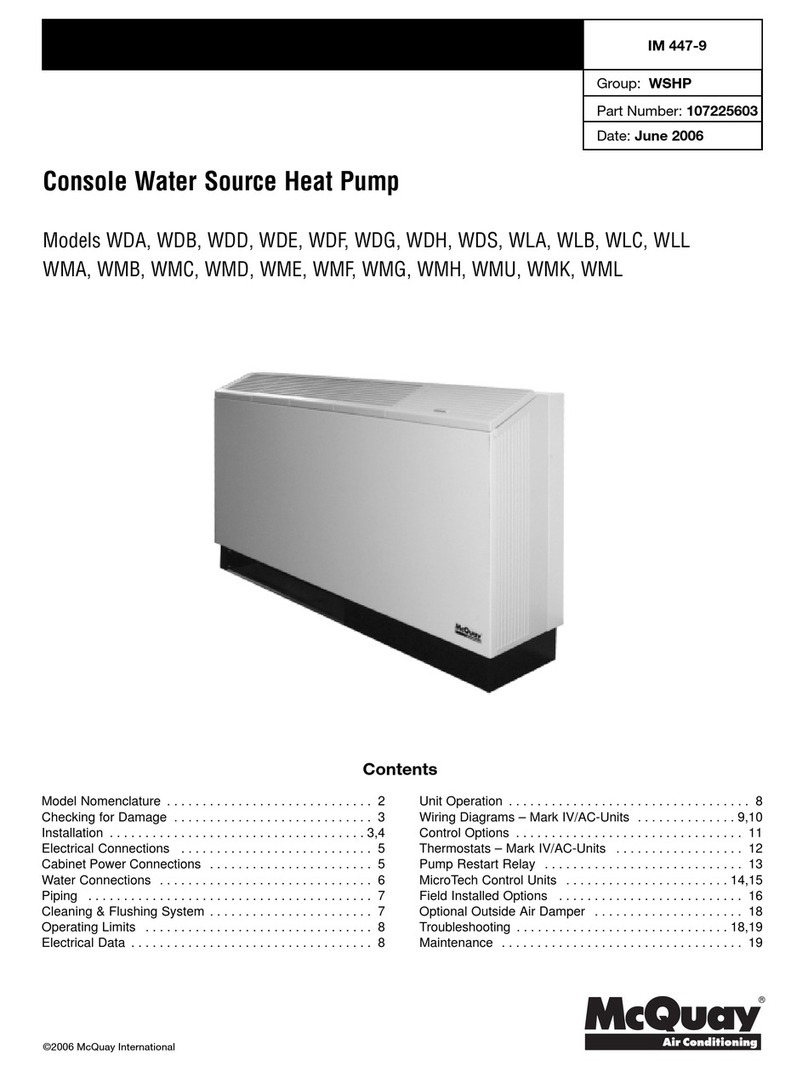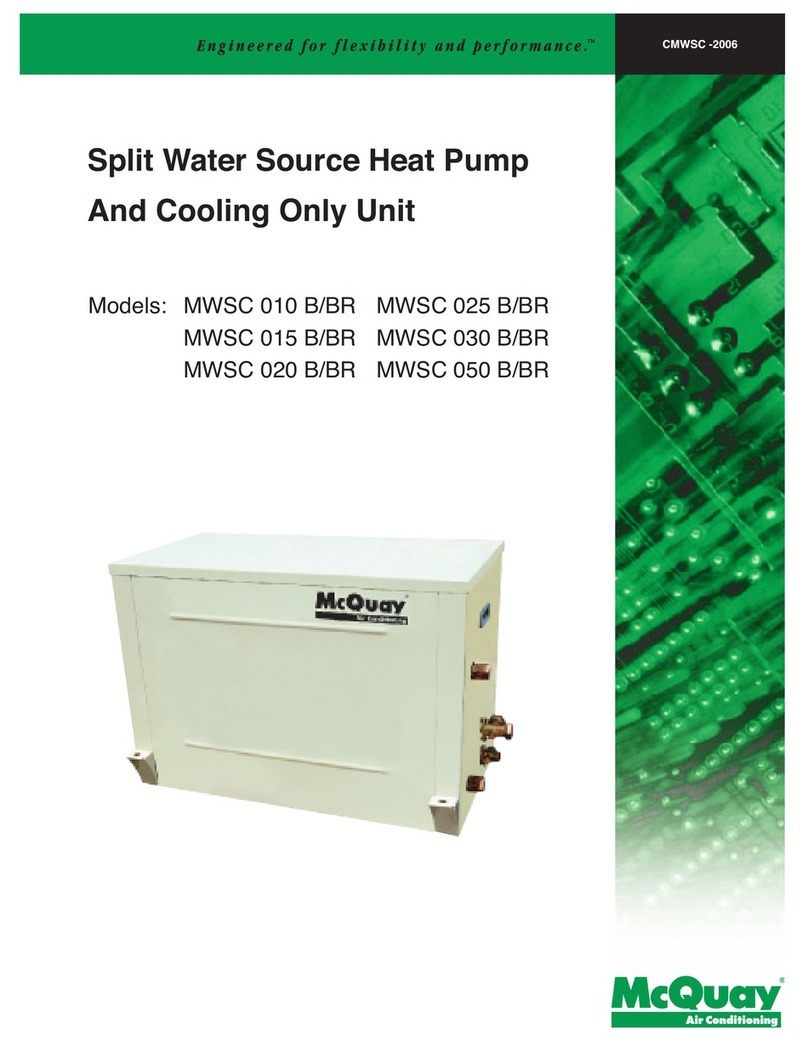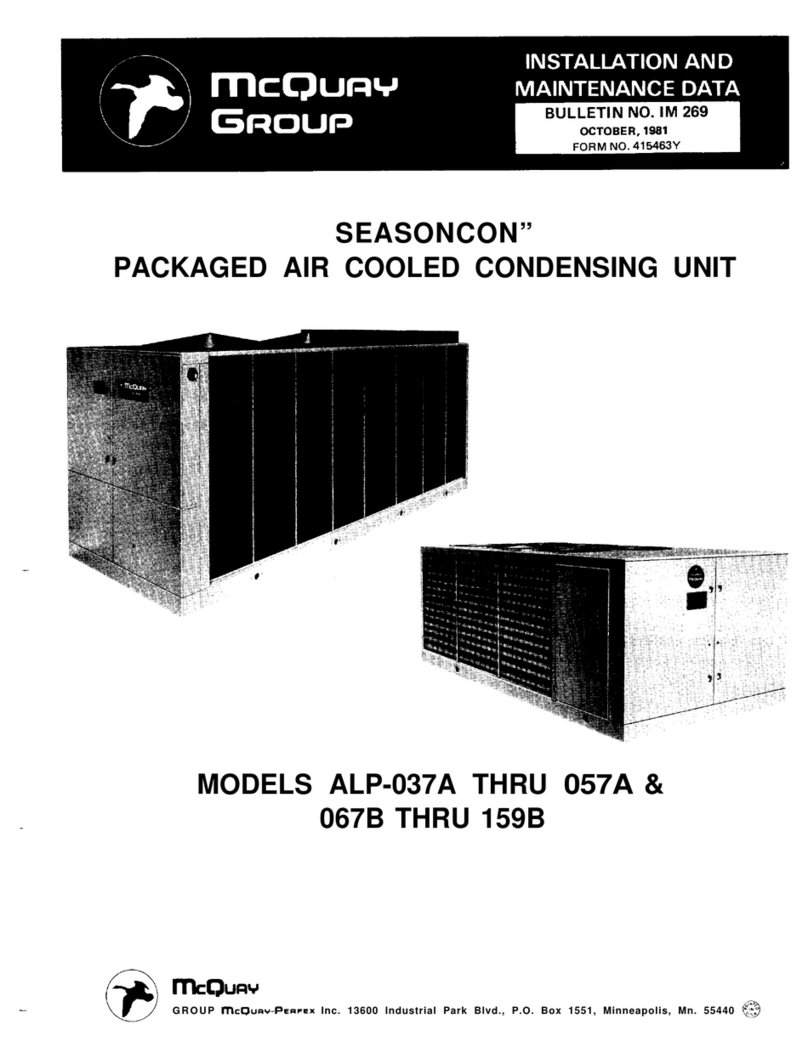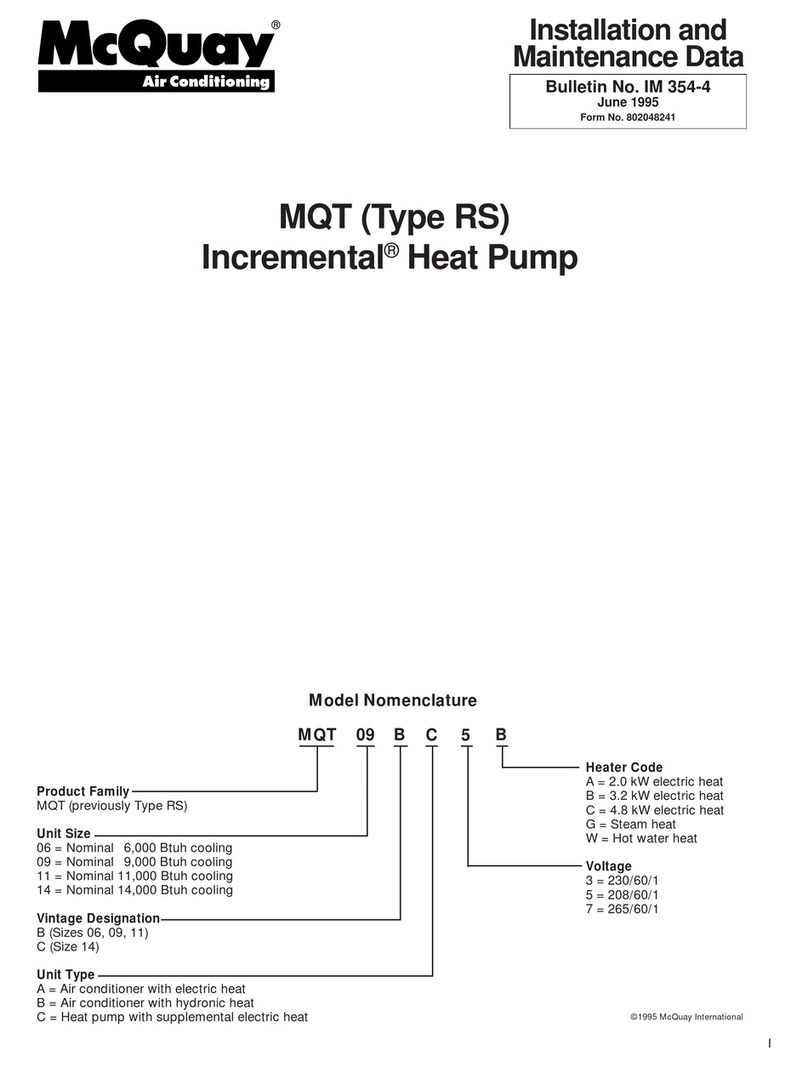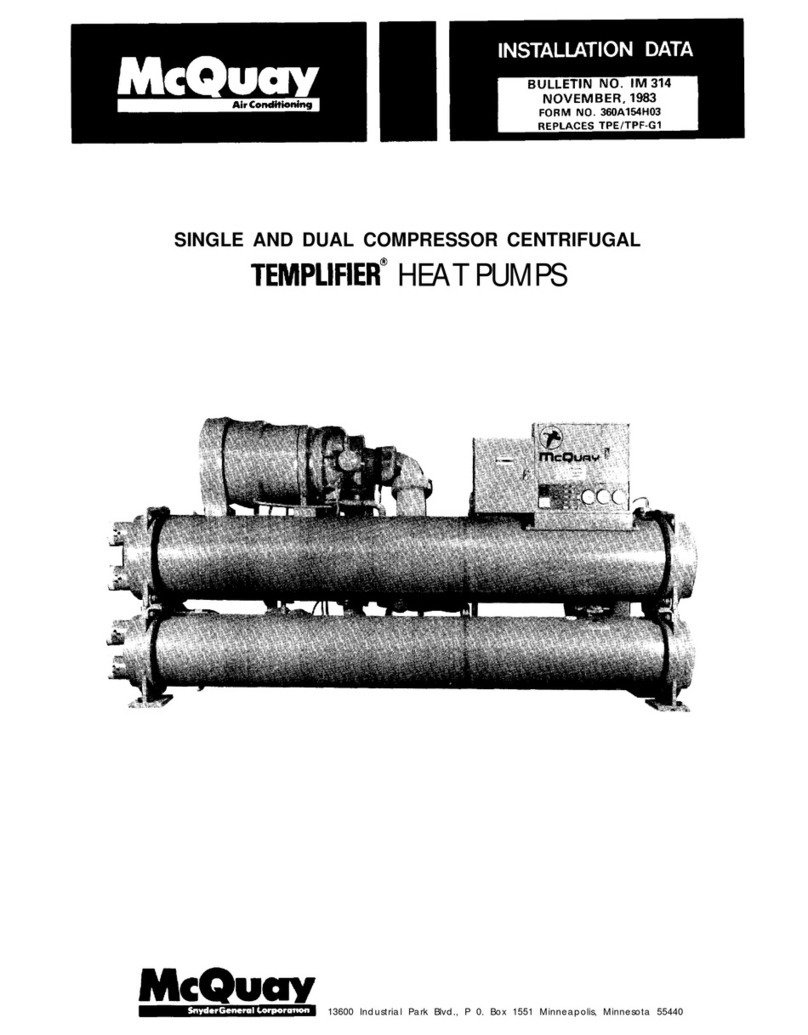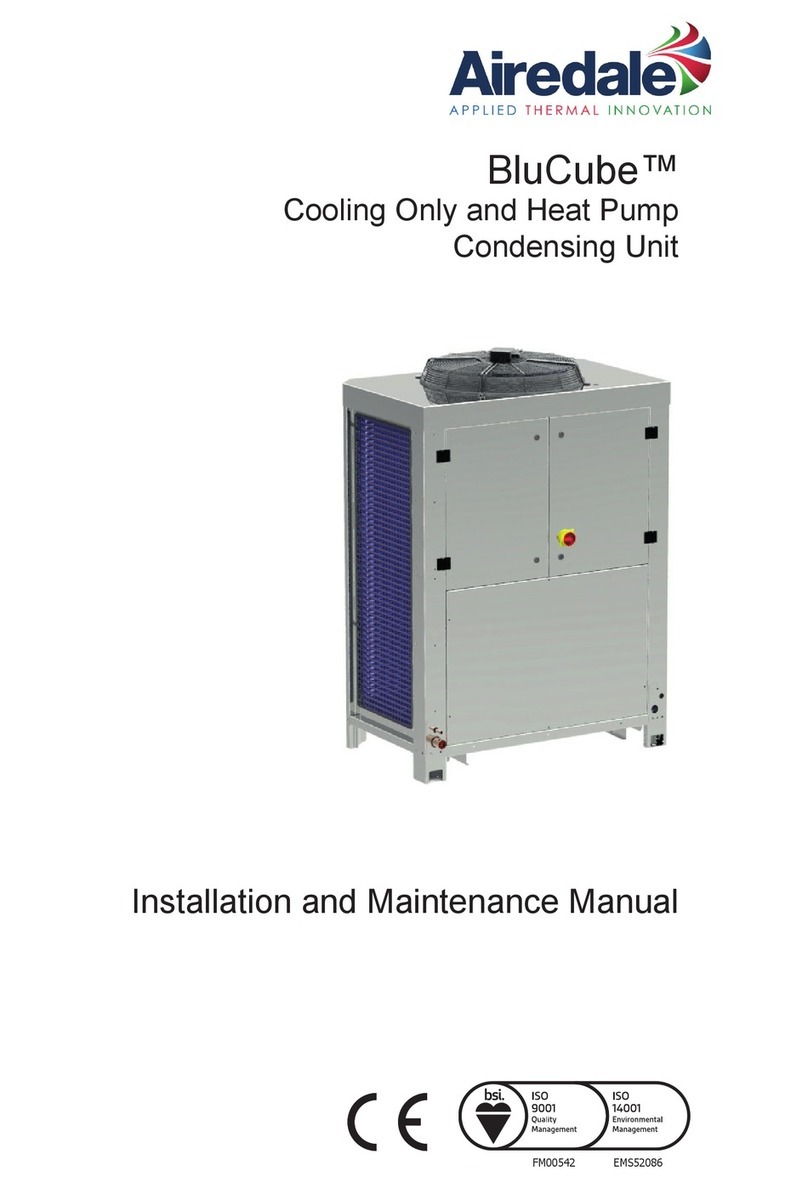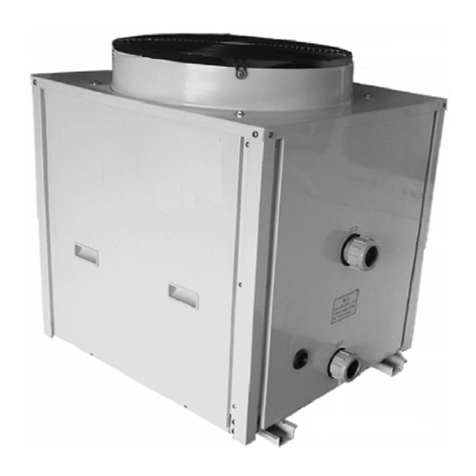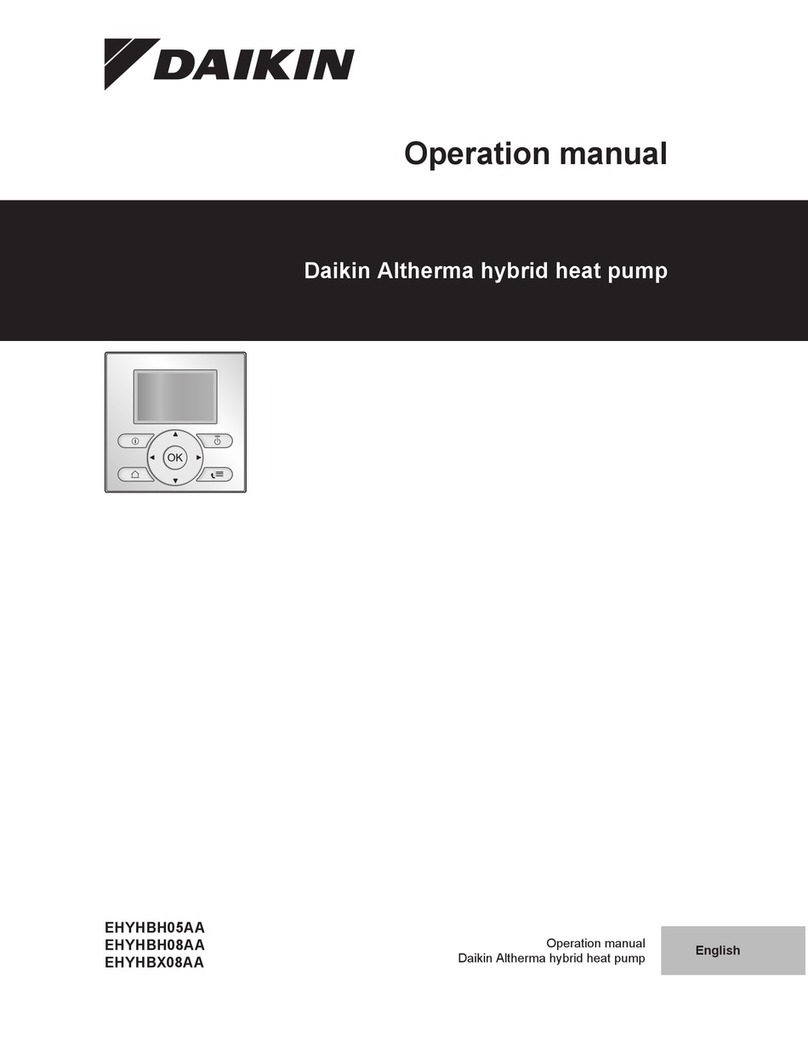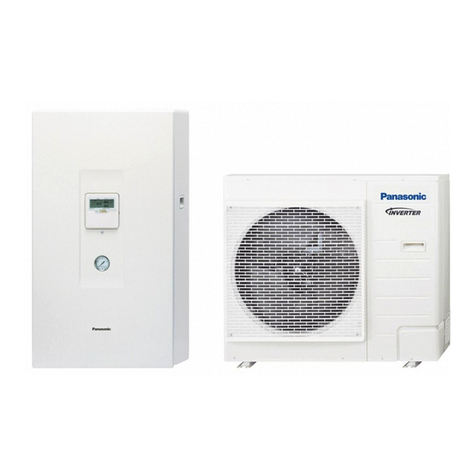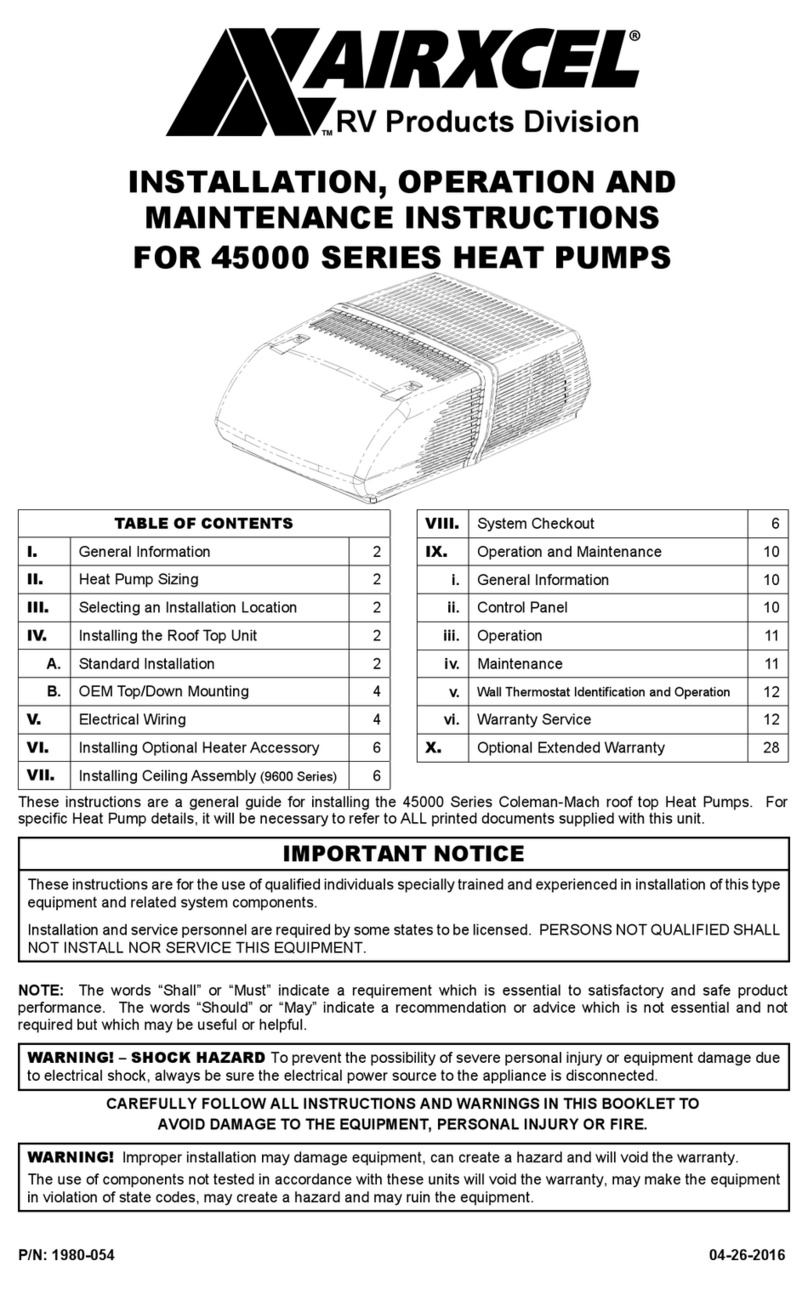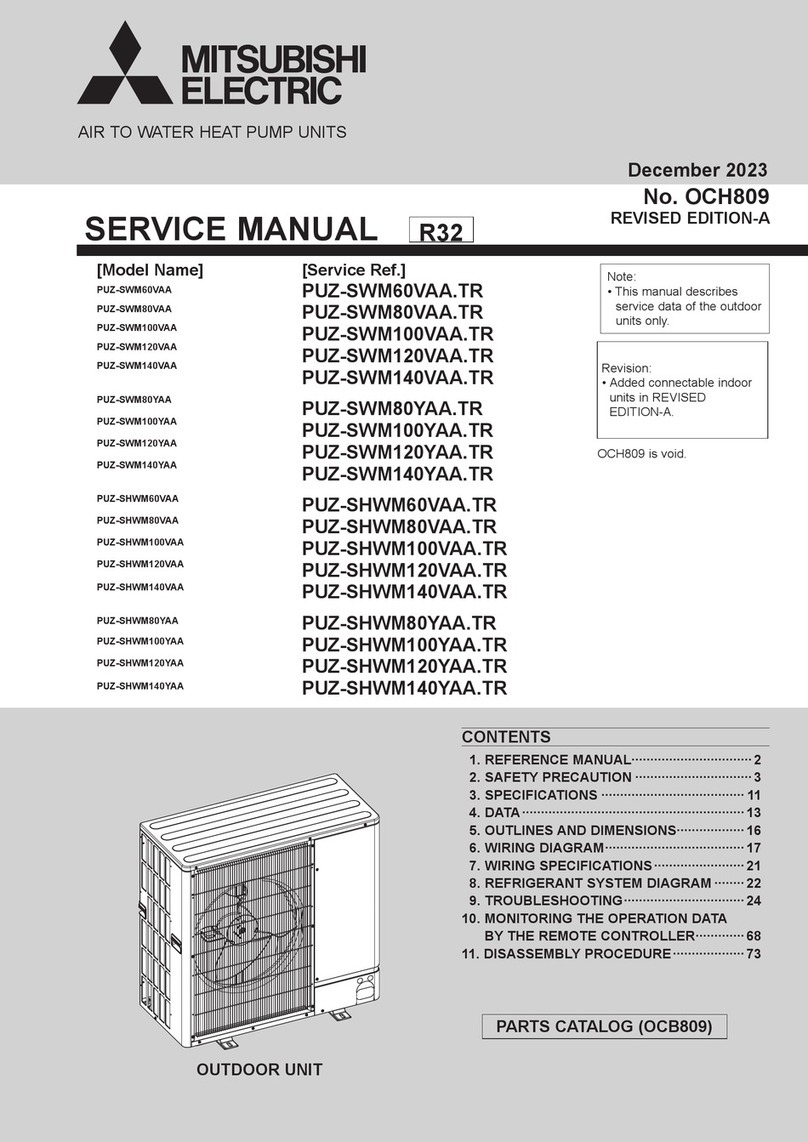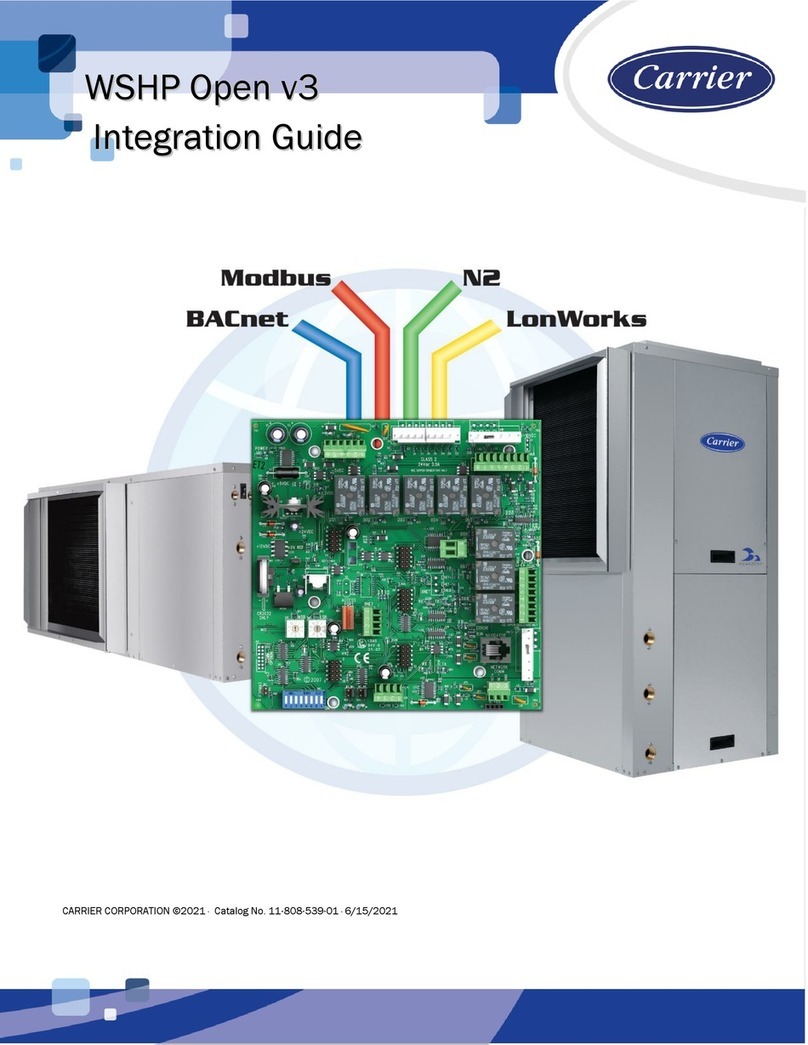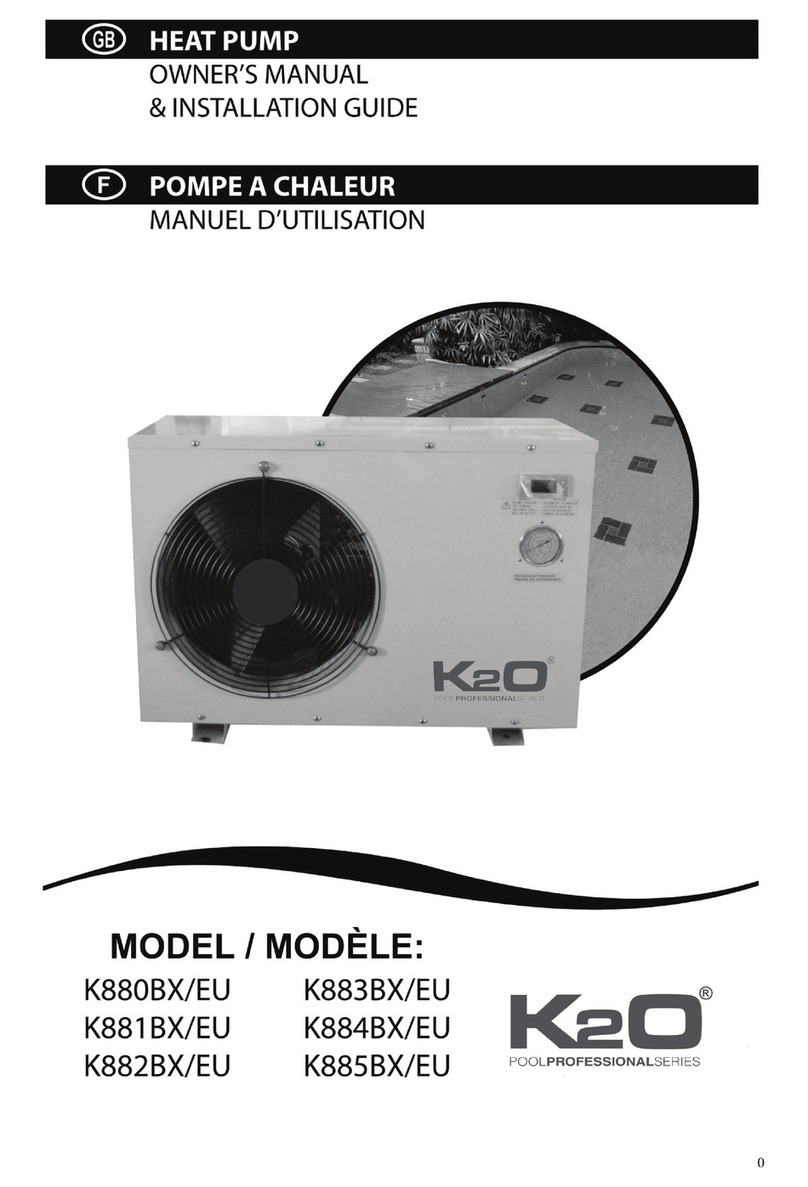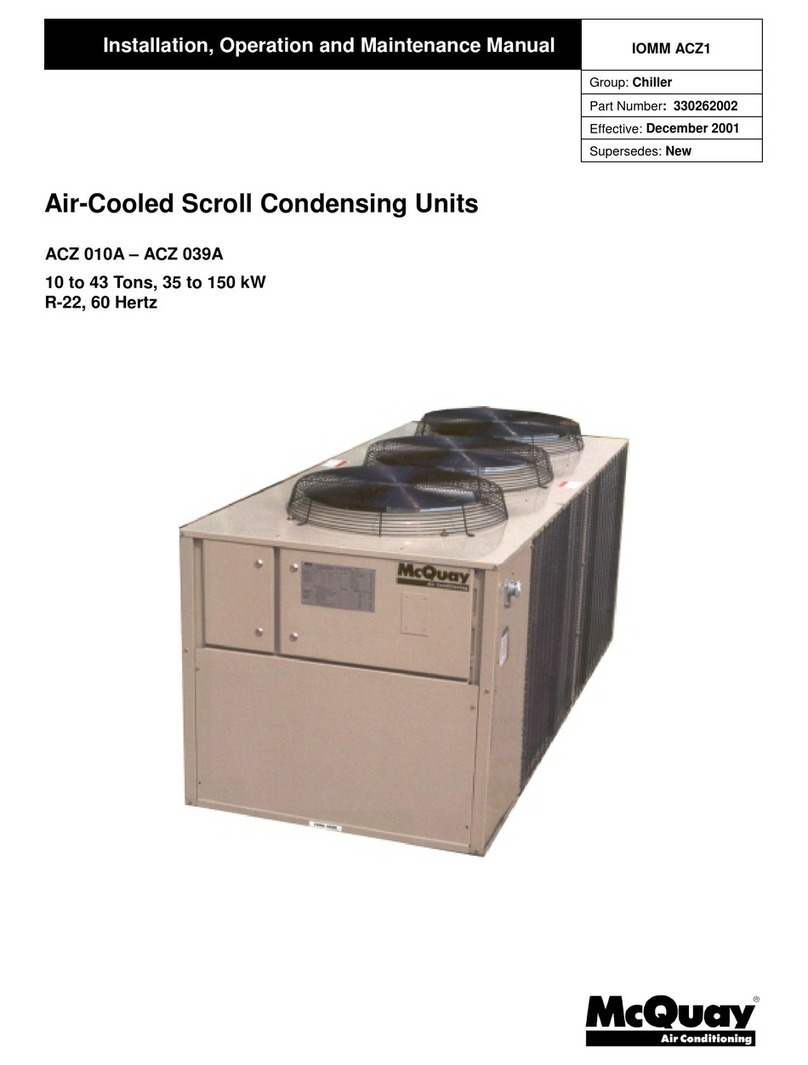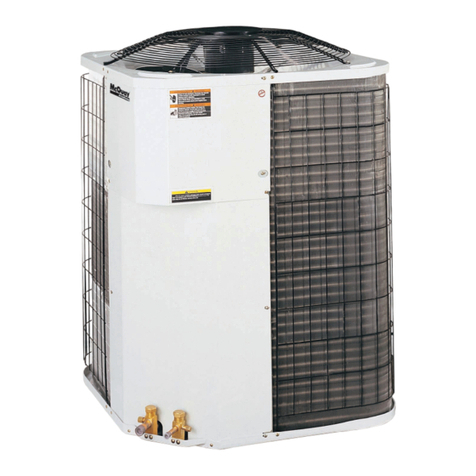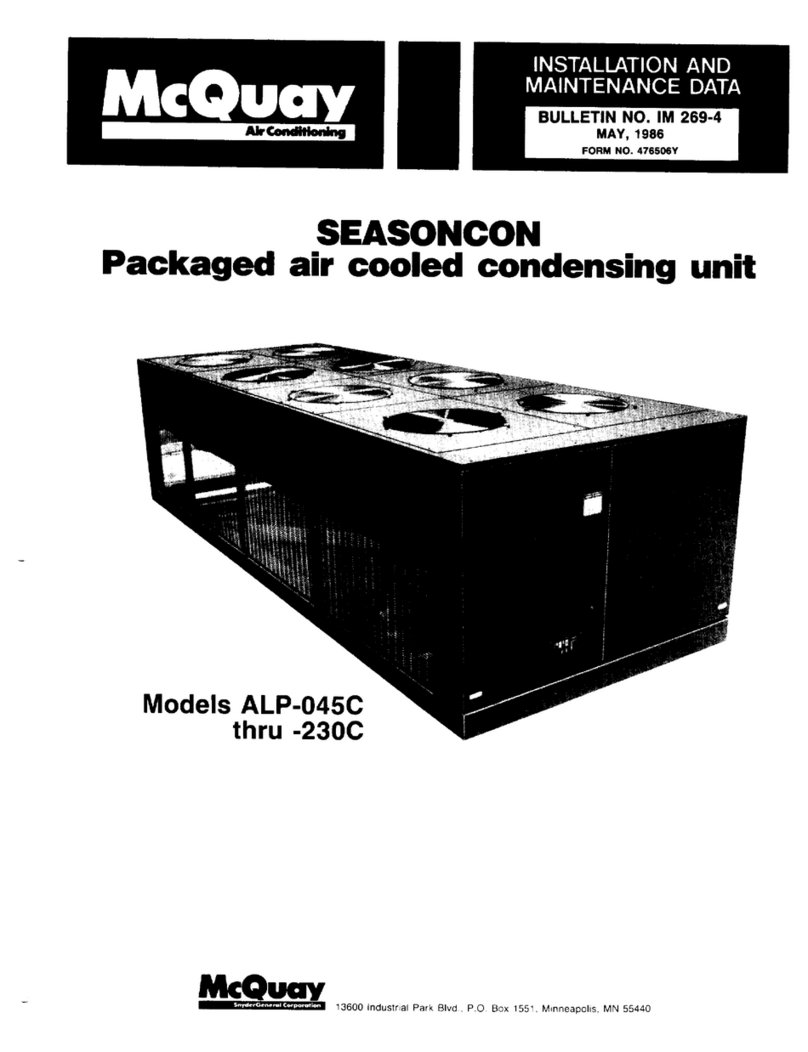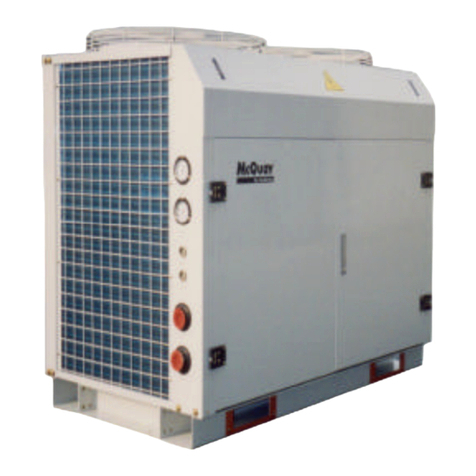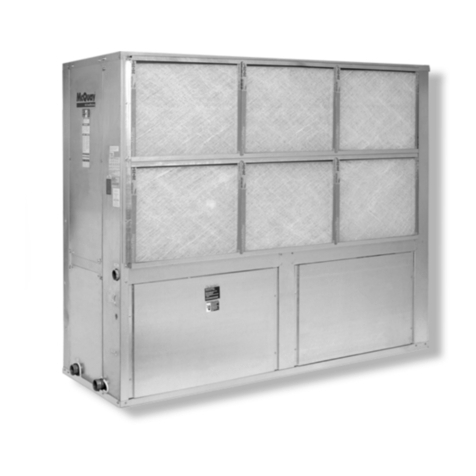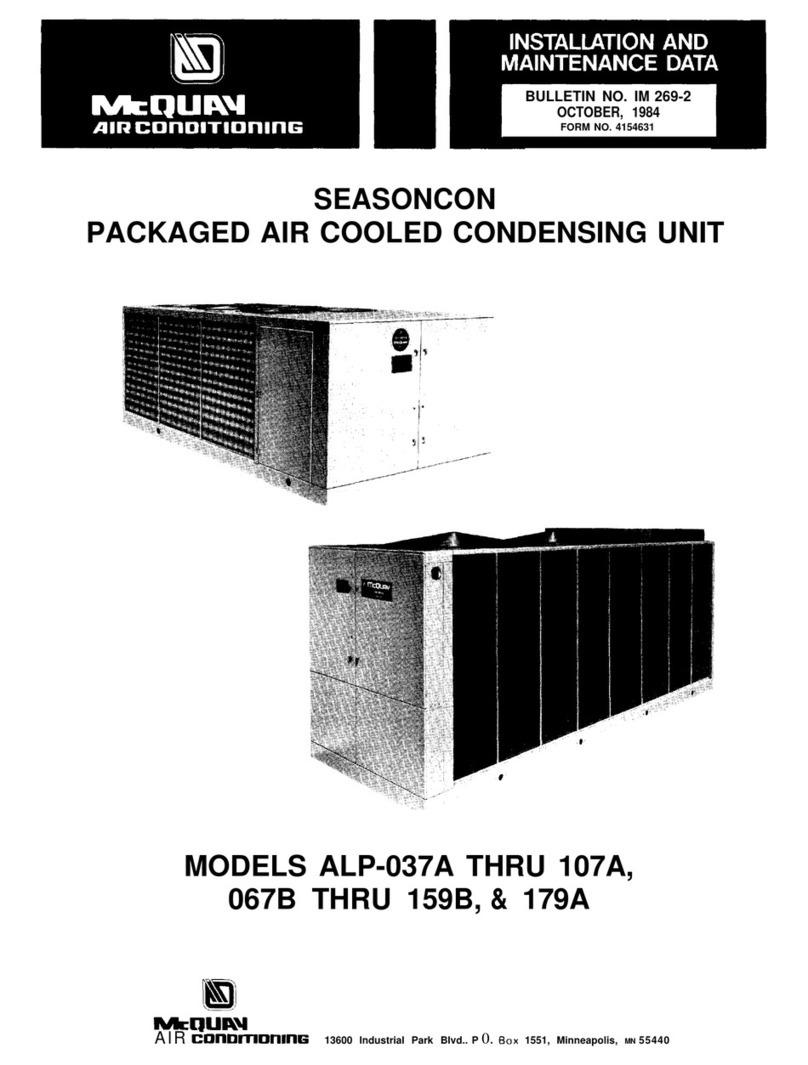
IM 407 / Page 7 of 24
exceed 35oF (19oC). If the air temperature exceeds 35oF
(19oC), the airflow rate is probably inadequate.
If the water temperature difference is less than 6oF
(3.3oC), the water flow rate is excessive. If the water
temperature difference exceeds 12oF (6.7oC), then the
water flow rate is inadequate.
6. Check the elevation and cleanliness of the condensate
line. If the air is too dry for sufficient dehumidification,
slowly pour enough water into the condensate pan to
ensure proper drainage.
7. If the conditioner does not operate, the following points
should be checked:
a. Is proper voltage being supplied to the machine?
b. Is the proper type of thermostat being used?
c. Is the wiring to the thermostat correct?
8. If the conditioner operates but stops after a brief period,
check for:
a. Is there proper airflow? Check for dirty filter, incorrect
fan rotation (3-phase fan motors only), or incorrect
ductwork.
b. Is there proper water flow rate within temperature
limits? Check water balancing; backflush unit if dirt
clogged.
9. Checktheunitfor vibratingrefrigerant piping,fan wheels,
etc.
10. Do not lubricate the fan motor during the first year of
operation as it is prelubricated at the factory.
Again, many conditioners have time delays which
protect the compressor against short cycling. After a
few minutes of operation, check the discharge grilles for
cool air delivery. Measure the temperature difference
between entering and leaving water. It should be ap-
proximately 11⁄2times greater than the heating mode
temperature difference. For example, if the cooling tem-
perature difference is 15oF (8oC), the heating tempera-
ture difference should have been 12oF (5oC).
Without automatic flow control valves, a cooling
temperature difference of 10oF to 14oF (5oC to 8oC) is
about right. Adjust the combination shutoff/balancing
valve in the return line to a water flow rate which will
result in the 10oF to 14oF (5oC to 8oC) difference.
5. Set thermostat to “Heat.” If thermostat is the automatic
changeover type, set system switch to the “Auto” posi-
tion and depress the heat setting to the warmest selec-
tion. Some conditioners have built-in time delays which
prevent the compressor from immediately starting. With
most control schemes, the fan will start immediately.
After a few minutes of compressor operation, check for
warm air delivery at discharge grille. If this is a “cold
building” start-up, leave unit running until return air to
the unit is at least 65oF (18oC).
Measure the temperature difference between enter-
ing and leaving air and entering and leaving water. With
entering water of 60oF to 80oF (16oC to 27oC), leaving
water should be 6oF to 12oF (3.3oC to 6.7oC) cooler, and
the air temperature rise through the machine should not
Operating Limits
Environment
This equipment is designed for indoor installation only.
Sheltered locations such as attics, garages, etc., generally
will not provide sufficient protection against extremes in
temperature and/or humidity, and equipment performance,
reliability, and service life may be adversely affected.
Power supply
A voltage variation of ±10% of nameplate utilization voltage
is acceptable. Three-phase system unbalance shall not ex-
ceed 2%.
Operating voltages
115/60/1............................... 104 volts min.; 127 volts max.
208-230/60/1 ....................... 197 volts min.; 253 volts max.
265/60/1............................... 238 volts min.; 292 volts max.
230/50/1............................... 197 volts min.; 253 volts max.
460/60/3............................... 414 volts min.; 506 volts max.
380/50/3............................... 342 volts min.; 418 volts max.
575/60/3............................... 515 volts min.; 632 volts max.
Note: Voltages listed are to show voltage range. However,
units operating with overvoltage and undervoltage for
extended periods of time will experience premature
component failure.
Additional information
1. Standard units — Units are designed to start-up in an
ambient of 40oF (5oC), with entering air at 40oF (5oC), with
entering water at 70oF (21oC), with both air and water at
the flow rates used in the ARI Standard 320-86 rating test,
for initial start-up in winter.
Note: This is not a normal or continuous operating con-
dition. It is assumed that such a start-up is for the purpose
of bringing the building space up to occupancy
temperature.
2. Extended range units —Extended range heat pump
conditioners are designed to start-up in an ambient of
40oF (5oC), with entering air at 40oF (5oC), with entering
water at 40oF (5oC), with both air and water at the flow
rates used in the ARI Standard 320-86 rating test, for initial
start-up in winter.
Note: This is not a normal or continuous operating
condition. It is assumed that such a start-up is for the
purpose of bringing the building space up to occupancy
temperature.
Water enthalpy
Cooling Heating Cooling Heating
Min. Ent. Water
➀ ➁ 55oF/13oC55
oF/13oC40
oF/5oC40
oF/5oC
Normal Ent. Water 85oF/29oC70
oF/21oC85
oF/29oC70
oF/21oC
Max. Ent. Air,
➀ ➁ 110oF/43oC90
oF/32oC110oF/43oC90
oF/32oC
Air and water limits
STANDARD EXTENDED
UNITS RANGE UNITS
Cooling Heating Cooling Heating
Min. Amb. Air 50oF/10oC50
oF/10oC40
oF/5oC40
oF/5oC
Normal Amb. Air 80oF/27oC70
oF/21oC80
oF/27oC70
oF/21oC
Max. Amb. Air 100oF/38oC85
oF/29oC100oF/38oC85
oF/29oC
Min. Ent. Air ➀ ➁ 50oF/10oC50
oF/10oC50
oF/10oC40
oF/5oC
Normal Ent. Air, 80/67oF70
oF80/67oF70
oF
db/wb 27/19oC21
oC27/19oC21
oC
Max. Ent. Air, 100/83oF80
oF100/83oF80
oF
db/wb ➀ ➁ 38/28oC27
oC38/28oC27
oC
➀At ARI flow rate
➁Maximum and minimum values may not be combined. If one value is at
maximum or minimum, the other two conditions may not exceed the
normal condition for standard units. Extended range units may combine
any two maximum or minimum conditions, but not more than two, with all
other conditions being normal conditions.
